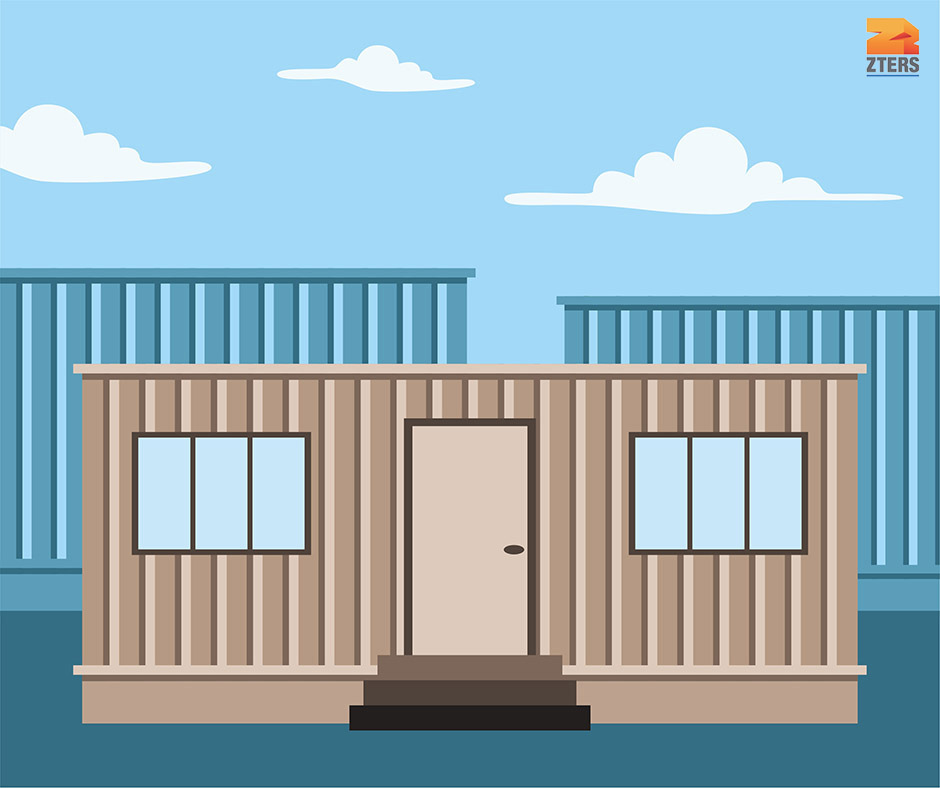Shipping container homes have been trending in the home design world since the 2010s, and it’s easy to see why. Using storage containers to build a home or office can be much faster than traditional construction, and there are many ways to customize a storage container. When you’re designing a cargo container home or office, here are five things to keep in mind before you buy those boxes.
1. What size container do you need?
Storage containers come in many sizes. The largest is 40-feet by 8-feet, and this is the size you most frequently see in design magazines and on storage container home websites. You can weld together smaller units, or even create large multi-story units using different sizes. If you’re not sure what size you want, consider renting a storage container for a few weeks or months to see how it fits in your location and whether it will provide enough space.
You can also use our free ZTERS app to view a storage container on your site. It has an augmented reality feature where you can see the dimensions of a storage container overlaid on your property. With just your phone’s camera, you’ll be able to see how large or small a container is relative to your site.
2. Does the storage container need to be refurbished?
While you can purchase brand new storage containers, most people buy them used or second hand. There are two kinds of used storage containers: “one-trip” containers and regular “used” containers. As the name implies, “one-trip” containers were only used one time, so they tend to be in like-new condition. Regular “used” units could have been used one or one hundred times, so there’s no telling what the condition could be.
When buying used storage containers, look for signs of rust. That will need to be remediated. You’ll also want to know whether waterproofing coatings or pesticides were used in the container. These chemicals are toxic and will need to be completely removed before you can live in them. Be sure to test for contamination after remediation to make sure it’s safe to inhabit.
3. Is the flooring safe?
Storage containers that have been used for product shipping, particularly overseas shipments, will probably have flooring materials treated with phosphorous or chromate. Before purchasing a storage container, find out how the flooring was treated and what chemicals were used. In most cases, it’s a good idea to change out the flooring regardless. After you remove the original flooring, marine plywood is a good all-purpose underlayment to use as a replacement under your surface flooring.
It might seem like a lot of work to replace the original flooring if it seems like it’s in good condition, but if you aren’t sure about the history of the container, it’s probably worth the extra time and expense to lay fresh flooring.
4. Go ahead and stack them!
Cargo containers are built to be stacked up to nine high on ships, so they can withstand the weight of stacking. Storage container buildings are often designed to be three or four stories high, so the only design limit is your local building ordinance. Your contractor will need to arrange crane placement, but it’s entirely possible to build multi-level homes and offices.
Need a Storage Container?
Speak with an account manager for a free quote.
Storage container strength goes beyond stacking. They’re also built to withstand hurricane-force winds and storm conditions at sea. This makes them a great option for regions that experience extreme weather conditions. Just make sure you’ve properly insulated to keep the heat and cold at bay.
5. DIY or contractor?
One of the reasons people love building storage container homes and office buildings is because you can design and build like a Lego set. Plenty of DIY storage container building guides are available for ambitious home builders. However, if you don’t have experience with plumbing and electrical, it’s a good idea to call a contractor.
Adding doors and windows to a storage container isn’t entirely out of reach for a DIY builder, but it will take special tools and you’ll need to understand how to reinforce the structure and properly seal and insulate openings. When in doubt, hire a contractor and let the pros handle the actual construction.
We’ve been working with storage containers for more than a decade, and we can help you rent a temporary storage container office to try out container living before investing in a full build. You may even want to live in a temporary container building while you’re building out your new home. Give us a call to find out about temporary container rentals.

